Table of Contents
Rattle Noise When Driving: A Case Study in the Mercedes-Benz GLB 300
The Mercedes-Benz GLB 300 is a well-known SUV, praised for its spaciousness, performance, and versatility. However, like any vehicle, it is not immune to mechanical issues. One of the common issues some owners may face is a rattle noise when driving. In this case study, we will explore a real-life scenario involving a Feeling of vibrations throughout the vehicle and how it was diagnosed and resolved.
Customer Complaint
The owner of a Mercedes-Benz GLB 300 visited the workshop with the following concerns:
– Rattle noise when driving
– Feeling of vibrations throughout the vehicle
– Uneven driving ability, making the ride less smooth
The customer was understandably concerned about the rattle noise when driving, as it affected both the driving experience and raised concerns about potential damage.
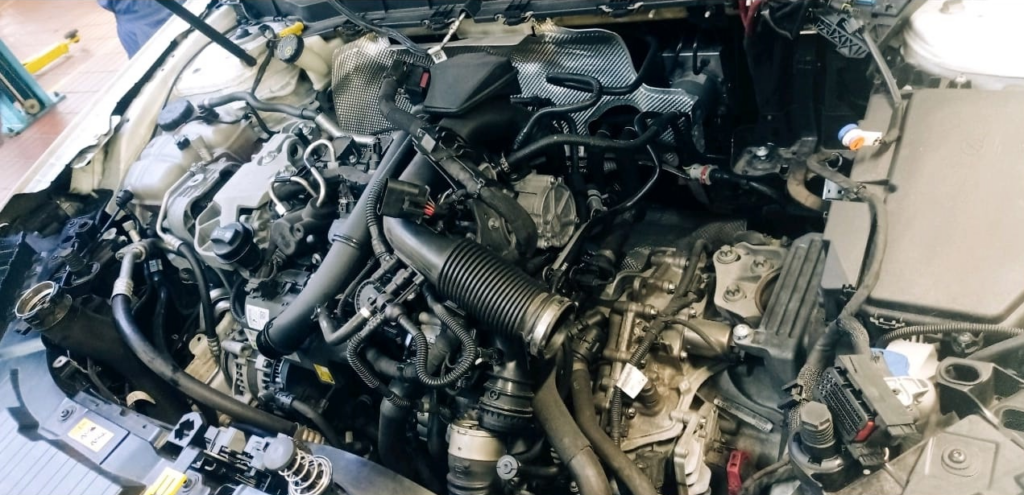
Diagnosis: How to identify a rattle noise when driving
To identify the source of the rattle noise when driving, a series of inspections and tests were conducted. Here’s a breakdown of the diagnostic process:
1. Test Drive
The vehicle was taken for a test drive, and the rattle noise when driving was confirmed. The noise was audible across all RPM levels, which helped narrow down the potential sources. However, the transmission control module appeared to be functioning correctly, ruling out electronic issues in the transmission system.
2. Transmission Inspection
Considering the noise seemed to originate from the transmission area, a more in-depth investigation was performed. A sample of the gearbox oil was taken to check for any signs of metal debris, indicating wear or damage within the transmission. Fortunately, no unusual wear debris was found in the oil sample.
3. Transmission Removal
To inspect the mechanical components more thoroughly, the transmission was removed from the vehicle. Since the Mercedes-Benz GLB 300 is a front-wheel-drive vehicle, both the engine and transmission were removed together for a complete examination.




Actual Cause and Repair:
Upon removing the transmission and further inspecting the internal components, the source of the rattle noise when driving was identified—the dual-mass flywheel was damaged. The dual-mass flywheel is a critical component that helps reduce engine vibrations and provides smoother shifting. When it is damaged, it can lead to rattle noises when driving, as well as vibrations and uneven driving ability, as described by the customer.
Dual-Mass Flywheel Replacement
The damaged dual-mass flywheel was replaced with a new one, eliminating the rattle noise. After the replacement, the vehicle was reassembled, and a final test drive confirmed that the rattle noise when driving was completely resolved. The customer’s concern about uneven driving ability was also addressed, as the new flywheel restored smoothness to the drive.


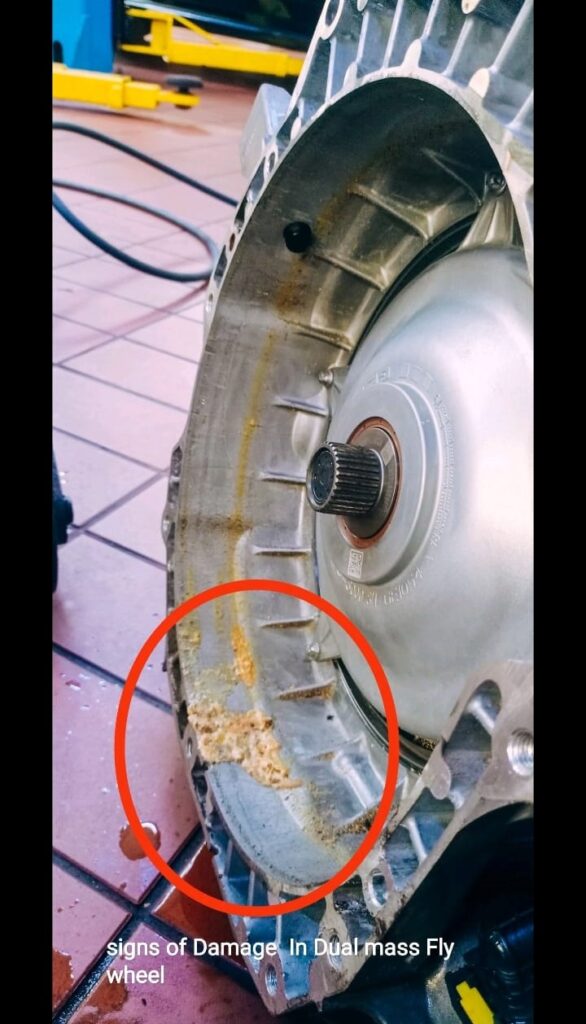
Conclusion:
In this case study, the rattle noise when driving in the Mercedes-Benz GLB 300 was caused by a damaged dual-mass flywheel. This issue can be difficult to diagnose without a proper inspection, as the noise can mimic other potential causes. It is always essential to perform a thorough diagnostic process, including test drives, oil sampling, and component inspections, to accurately identify the root cause of the problem.
Rattling Car Noise
Rattling car noise is a common concern that can originate from various parts of the vehicle. It can occur while driving, idling, or accelerating, and the cause can range from minor to more serious mechanical issues. Here are some common causes and details about rattling car noise:
1. Bad Dual-Mass Flywheel
- Location: Between the engine and transmission.
- Symptoms: Rattling noise when starting, idling, or changing gears.
- Cause: The dual-mass flywheel helps absorb engine vibrations, but when worn or damaged, it can produce a metallic rattling noise. This issue is common in vehicles with manual or automated transmissions.
2. Exhaust System Issues
- Location: Exhaust pipes or muffler.
- Symptoms: Rattling noise when driving or accelerating.
- Cause: A broken or loose exhaust part, such as a clamp, hanger, or even a damaged catalytic converter, can create a rattling noise. The noise might change with the RPM or speed.
3. Loose Parts (Bolts, Nuts, Clips)
- Location: Various parts of the vehicle.
- Symptoms: Persistent rattling noise when driving, especially over bumps.
- Cause: Loose bolts, screws, or clips holding parts like the bumper, body panels, or trim can create a rattling sound. This type of noise is often more noticeable when driving on rough roads or hitting a bump.
4. Suspension Components
- Location: Wheels, struts, shocks, or suspension arms.
- Symptoms: Rattling noise, especially over uneven roads or when turning.
- Cause: Worn suspension parts like strut mounts, ball joints, or sway bar links can cause a rattling sound. These components are vital for smooth handling, and worn parts can affect vehicle stability.
5. Worn or Failing Engine Components
- Location: Inside or around the engine.
- Symptoms: Rattling noise from the engine bay, often noticeable during acceleration.
- Cause: Worn engine parts such as timing chains, tensioners, or valves can cause rattling noises. A failing timing chain or belt can lead to severe engine damage if not addressed promptly.
6. Loose Interior Parts
- Location: Dashboard, door panels, seats.
- Symptoms: Rattling sound coming from the interior of the vehicle.
- Cause: Loose screws, clips, or interior panels can create an annoying rattling noise, especially on rough roads. This is often a minor issue, but can be distracting for drivers and passengers.
7. Loose or Damaged Heat Shield
- Location: Underneath the car, near the exhaust system.
- Symptoms: A rattling sound, especially when accelerating or idling.
- Cause: Over time, the heat shield that protects other components from exhaust heat may become loose due to rust or damage. When it vibrates against other parts of the car, it produces a rattling noise.
8. Brake System Issues
- Location: Wheels, brake pads, calipers.
- Symptoms: Rattling noise when braking or driving at low speeds.
- Cause: Worn or loose brake pads, caliper bolts, or rotors can cause a rattling noise. This is particularly concerning since it may indicate a problem with the braking system, which can affect safety.
9. Debris in Engine Compartment
- Location: Under the hood.
- Symptoms: Rattling noise that may come and go depending on vehicle speed.
- Cause: Small rocks or debris trapped in the engine bay or undercarriage can cause a rattling sound. This is often a temporary issue, and clearing the debris can resolve the noise.
If you hear a rattling car noise, it’s essential to diagnose it early. While some causes are minor, others may indicate more severe problems that, if ignored, could lead to costly repairs or safety concerns.

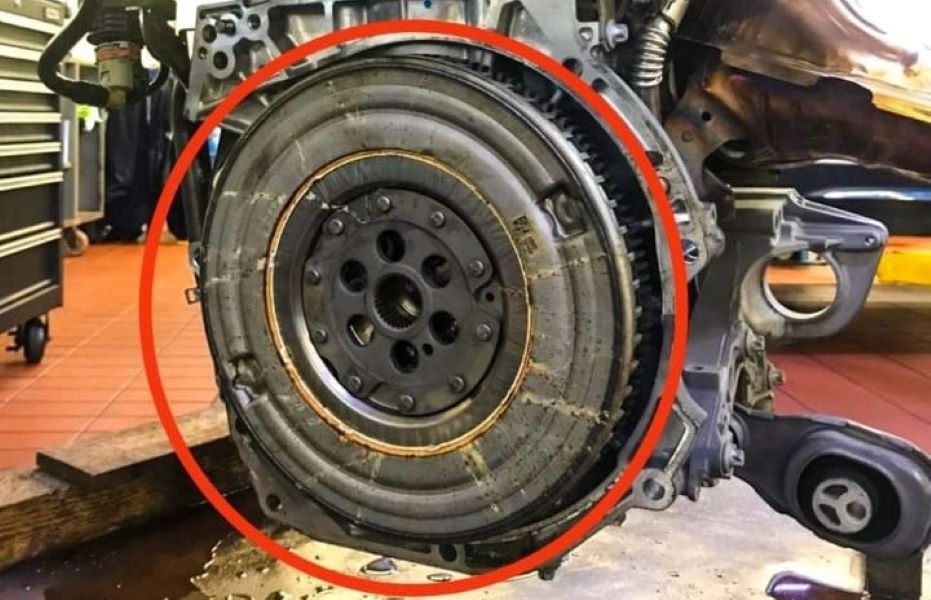


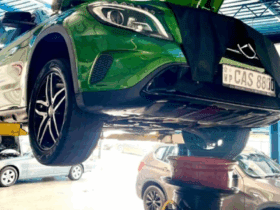
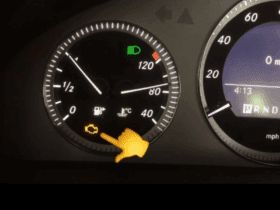
Leave a Reply